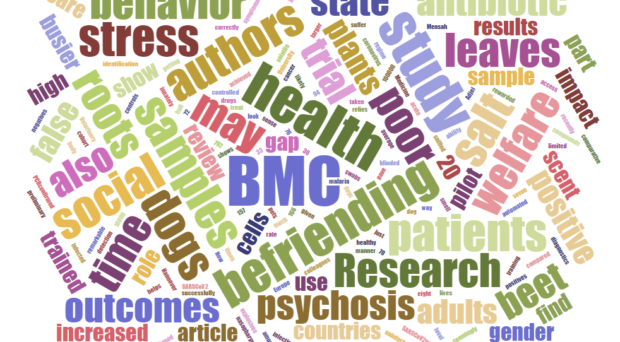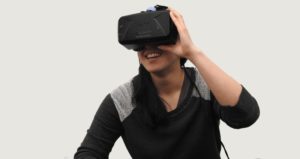
BMC Palliative Care – Virtual reality video promotes effectiveness in advance care planning

Watching a Virtual Reality video was found to be an effective decision-making aid for people making an advance care plan. Advance care planning offers people the opportunity to plan their future care and support, including medical treatment, while they have the capacity to do so. Legislation allowing advance care planning is relatively new in Asia and has been recently introduced in Taiwan. Taiwanese people must complete a consultation before formally documenting their wishes. However, health and legal literacy can be a barrier to people making fully-informed decisions about their future care. Wan-Ting Hsieh showed 120 people a short video in virtual reality that documented typical scenarios in end-of-life care, such as hospice home care and the withdrawal of life support. After viewing the video, participant’s preferences for not accessing the medical treatments shown and the ability to make a decision about their future care increased. The study provides evidence for how VR tools could be further rolled out as decision-making aids and bridge gaps in health and legal literacy for important decisions about their future.
BMC Public Health – Changes in sedentary behaviour in European Union adults between 2002 and 2017
 Sedentary behaviors rose between 2002 and 2017 in the European Union, particularly in men. Sedentary behavior is an important risk factor for mortality and continues to be a public health challenge with significant health, social and economic consequences. López-Valenciano et al. analyzed data that surveyed European Union adult citizen’s physical activity and sedentary behaviors. In 2002, half of those surveyed were inactive for more than 4.5 hours each day; by 2017 this had risen to 54.5%. The researchers suggested a number of factors could account for this increase in sedentary behavior, such as longer commutes and labor-saving devices at home and work. The authors also attributed people’s interaction with technology such as smartphones and streaming services with increasing physical inactivity. The study provides supporting data for strengthening public health policies and international efforts to tackle rises in sedentary behavior.
Sedentary behaviors rose between 2002 and 2017 in the European Union, particularly in men. Sedentary behavior is an important risk factor for mortality and continues to be a public health challenge with significant health, social and economic consequences. López-Valenciano et al. analyzed data that surveyed European Union adult citizen’s physical activity and sedentary behaviors. In 2002, half of those surveyed were inactive for more than 4.5 hours each day; by 2017 this had risen to 54.5%. The researchers suggested a number of factors could account for this increase in sedentary behavior, such as longer commutes and labor-saving devices at home and work. The authors also attributed people’s interaction with technology such as smartphones and streaming services with increasing physical inactivity. The study provides supporting data for strengthening public health policies and international efforts to tackle rises in sedentary behavior.
 Genomic mechanisms behind the rapid adaption of polar bears to arctic environments have been revealed. Polar bears rapidly evolved several traits from its closest living relative, the brown bear, that has promoted the species’ survival in arctic environments. Castruita et al. studied the genomic mechanisms underpinning how these characteristics were selected in polar bears by analyzing the genomes of more than 100 polar bears and 33 brown bears. The analysis revealed that a combination of standing variation in ancestral gene pools and de novo mutations in polar bear lineages may have promoted the rapid adaption of polar bears to arctic environments. The study provides a comprehensive assessment of the genomic mechanisms behind how polar bears rapidly adapted to the Arctic.
Genomic mechanisms behind the rapid adaption of polar bears to arctic environments have been revealed. Polar bears rapidly evolved several traits from its closest living relative, the brown bear, that has promoted the species’ survival in arctic environments. Castruita et al. studied the genomic mechanisms underpinning how these characteristics were selected in polar bears by analyzing the genomes of more than 100 polar bears and 33 brown bears. The analysis revealed that a combination of standing variation in ancestral gene pools and de novo mutations in polar bear lineages may have promoted the rapid adaption of polar bears to arctic environments. The study provides a comprehensive assessment of the genomic mechanisms behind how polar bears rapidly adapted to the Arctic.
BMC Infectious Diseases – Improving the impact of non-pharmaceutical interventions during COVID-19: examining the factors that influence engagement and the impact on individuals
 Community compliance with non-pharmaceutical interventions in a pandemic may be influenced by the perceived severity of illness in the community. In an effort to flatten peaks of COVID-19 infections, governments have introduced various non-pharmaceutical interventions, such as social distancing, lockdowns, and the use of face-coverings. However, how much of a positive impact these interventions have relies on community understanding, engagement, and compliance. Seale et al. conducted a rapid review of the literature to study the factors that impact community engagement with government interventions. The emerging theme identified by the review was how can an environment be created that supports and promotes the adoption of non-pharmaceutical interventions in the community? The authors suggest integrating community co-design of supporting communications and materials to promote engagement and compliance with interventions.
Community compliance with non-pharmaceutical interventions in a pandemic may be influenced by the perceived severity of illness in the community. In an effort to flatten peaks of COVID-19 infections, governments have introduced various non-pharmaceutical interventions, such as social distancing, lockdowns, and the use of face-coverings. However, how much of a positive impact these interventions have relies on community understanding, engagement, and compliance. Seale et al. conducted a rapid review of the literature to study the factors that impact community engagement with government interventions. The emerging theme identified by the review was how can an environment be created that supports and promotes the adoption of non-pharmaceutical interventions in the community? The authors suggest integrating community co-design of supporting communications and materials to promote engagement and compliance with interventions.
BMC Medical Research Methodology – Protocol registration issues of systematic review and meta-analysis studies: a survey of global researchers
 Almost half of systematic review and meta-analysis authors have never registered the protocol for their study a survey finds. Registering a systematic review protocol promotes transparency, prevents bias, and duplication of work. Cochrane and other bodies recommend prospectively registering systematic review protocols but journals do not mandate it, contrasting with their registration requirements for clinical trials. Tawfik et al. surveyed 270 systematic review and meta-analysis authors to assess researchers’ knowledge and attitudes towards systematic review protocol registration. Survey respondents acknowledged a lack of knowledge surrounding obligation and importance about protocol registration. The study calls for collaborative efforts to raise awareness of the benefits of systematic review protocol registration in the research community.
Almost half of systematic review and meta-analysis authors have never registered the protocol for their study a survey finds. Registering a systematic review protocol promotes transparency, prevents bias, and duplication of work. Cochrane and other bodies recommend prospectively registering systematic review protocols but journals do not mandate it, contrasting with their registration requirements for clinical trials. Tawfik et al. surveyed 270 systematic review and meta-analysis authors to assess researchers’ knowledge and attitudes towards systematic review protocol registration. Survey respondents acknowledged a lack of knowledge surrounding obligation and importance about protocol registration. The study calls for collaborative efforts to raise awareness of the benefits of systematic review protocol registration in the research community.
Comments